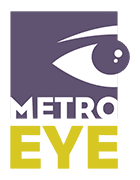Unless you’re trying to make a fashion (anti-fashion?) statement, wearing glasses that don’t fit is something most of us try to avoid.
However, for some of us, finding glasses that fit well can be a real chore. Large faces, petite faces, and shallow bridges are a few features that can cause fitting problems; frames that don’t fit correctly can slide off your nose, produce skin irritation behind your ears, or cause pressure and discomfort. If you have a hard-to-fit face, knowing how to find the correct size frame that fits you properly can eliminate needless shopping time and keep those peepers happy without causing the rest of your face discomfort! Here are some tips [fitting tips via OpticalVision]:
1. Visit an optical store or optician’s office where you can try on frames and be fitted by a certified optician who has been specifically trained to find frames and fit customers. Once you’ve selected a few that you like, try them on and choose your frames based on fit, feel, and personal taste. Don’t be afraid to ask questions and speak up!
2. Find your correct frame’s size. A comfortable frame fit is based on three measurements: eye size; bridge size; and temple length – all measured in millimeters. The eye size is measured horizontally across the eyeglass lens. The bridge size is the distance between the lenses. Eye size and bridge size are located together; they can be separated by a dash or a box – for example, 52-17. You can find these two sizes in one of two places: either behind the bridge of the frame or along the inside of the temple. If a frame has adjustable nose pads, your optical stylist can adjust the bridge size to fit.
3. Find your correct temple size. The temples, or arms, are the two parts that extend over your ears. Temple size is usually a three-digit number, usually between 125 and 165, found along the inside of one of the two temples. The temple fit should extend past your ear just enough to hold the glasses in place, without touching the sides of your face or digging into your skin.
4. Use your eyeglass frame size to narrow your choices and purchase your glasses. Remember the measurements for future reference, i.e., if you ever have to purchase a pair of spares in an emergency, or order replacements online.


